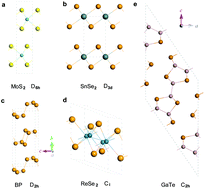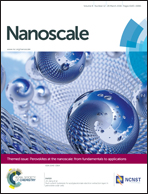Review on the Raman spectroscopy of different types of layered materials†
Abstract
Two-dimensional layered materials, such as graphene and transition metal dichalcogenides (TMDs), have been under intensive investigation. The rapid progress of research on graphene and TMDs is now stimulating the exploration of different types of layered materials (LMs). Raman spectroscopy has shown its great potential in the characterization of layer numbers, interlayer coupling and layer-stacking configurations and will benefit the future explorations of other LMs. Lattice vibrations or Raman spectra of many LMs in bulk have been discussed since the 1960s. However, different results were obtained because of differences or limitations in the Raman instruments at early stages. The developments of modern Raman spectroscopy now allow us to revisit the Raman spectra of these LMs under the same experimental conditions. Moreover, to the best of our knowledge, there were limitations in detailed reviews on the Raman spectra of these different LMs. Here, we provide a review on Raman spectra of various LMs, including semiconductors, topological insulators, insulators, semi-metals and superconductors. We firstly introduce a unified method based on symmetry analysis and polarization measurements to assign the observed Raman modes and characterize the crystal structure of different types of LMs. Then, we revisit and update the positions and assignments of vibration modes by re-measuring the Raman spectra of different types of LMs and by comparing our results to those reported in previous papers. We apply the recent advances on the interlayer vibrations of graphene and TMDs to these various LMs and obtain their shear modulus. The observation of the shear modes of LMs in bulk facilitates an accurate and fast characterization of layer numbers during preparation processes in the future by a robust layer-number dependency on the frequencies of the shear modes. We also summarize the recent advances on the layer-stacking dependence on the intensities of interlayer shear vibrations. Finally, we review the recent advances on Raman spectroscopy in the characterization of anisotropic LMs, such as black phosphorus and rhenium diselenide. We believe that this review will benefit the future research studies on the fundamental physics and potential applications of these various LMs, particularly when they are reduced down to monolayers or multilayers.

- This article is part of the themed collection: Editor’s Choice: Optical Spectroscopy of 2D materials

 Please wait while we load your content...
Please wait while we load your content...